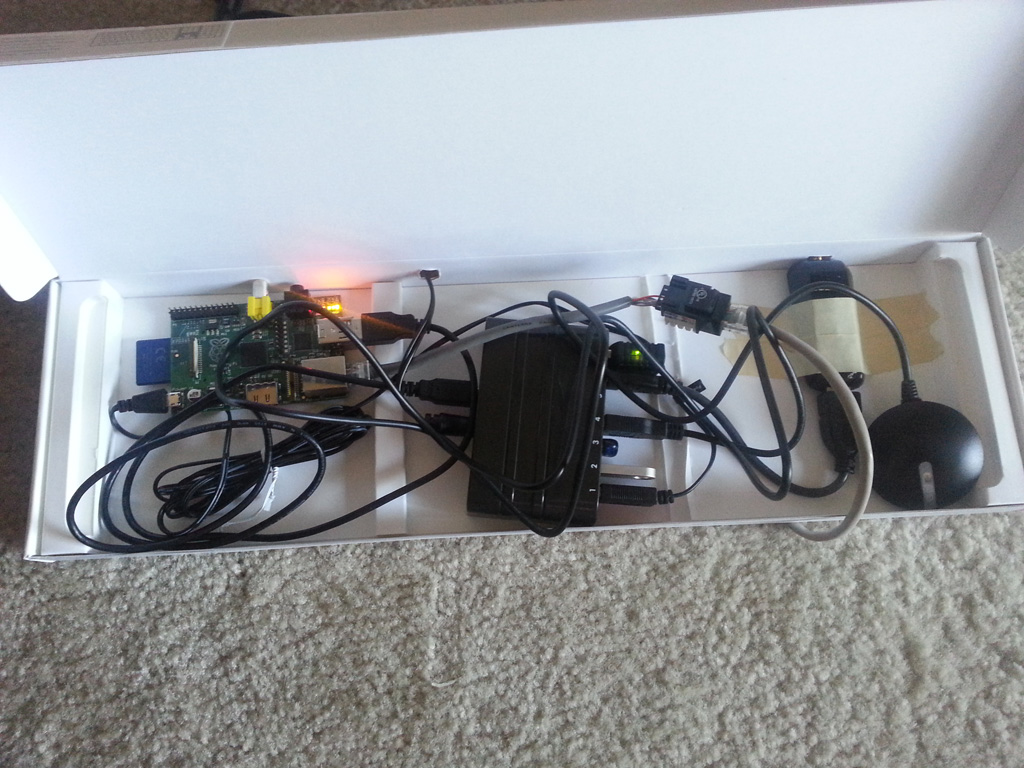Raspberry Pi with Tons of Hardware
Support this website by purchasing prints of my photographs! Check them out here.Here's the latest picture of my Raspberry Pi. Notice how it's not in a sexy metal box, but a bland cardboard box (well, not so bland, it once housed an overpriced Apple keyboard). I'm going to stick to hacking apart cheap boxes until I figure out exactly what I'm building; the aluminum case from Adam is sexy and I'll go back to it once I figure out what I'm building.

I bought everything from Amazon, so here is a list to each of the items you see above. I buy things specifically which are compatible with Linux, and things that are cheap ;-). They get bonus points if they are expandable and offer better features than their brethren (e.g. the WiFi card). You can get way cheaper and smaller WiFi cards these days, but the external antenna and amperage is a bonus.
The 7 Port Powered USB Hub ($20) is pretty cool, it allows for a single point of power to enter the system. The Raspberry Pi is powered by the hub, using a power-only cable. The hub is plugged into the Raspberry Pi using a data-only cable. This way you don't get any power/data issues. The hub outputs over 2 amps, so it's great for this setup.
The USB Sound Card ($7) was chosen because I was having all sorts of issues with the onboard sound card (e.g. at its fullest volume it was barely audible). It was a low-cost solution to the problem (and it's small profile is a bonus).
The USB Bluetooth Dongle ($14) is praised for having such great Linux compatibility. The newer version of that device supports better features (Bluetooth 4 vs 3), and is even cheaper, but reviews regarding Linux compatibility had me concerned. I just love hardware that plugs in and works!
The 8GB Class 10 SDHC Card ($7) card is fast and cheap and big. It was on the list of known compatible devices on the Raspberry Pi wiki, so I bought it without hesitation.
The USB WiFi Adapter ($27) supports master mode (if you get blessed with the right chipset). It is a small card, nice and powerful, and best of all has a removable antenna (if you ever get into hardcore wireless stuff). It is attached to the Pi via a 6″ USB Extension Cord ($5) for flexibility with mounting.
The USB GPS Adapter ($26) worked great and seems to be pretty high quality. It seems to work by emulating serial.
The 16GB USB Thumb Drive ($10) is super sexy, and importantly has a very low profile, something important with these tiny projects.
Once you add everything up (including the $35 Raspberry Pi), my project has cost me about $150! These things can be addictive, so watch out.